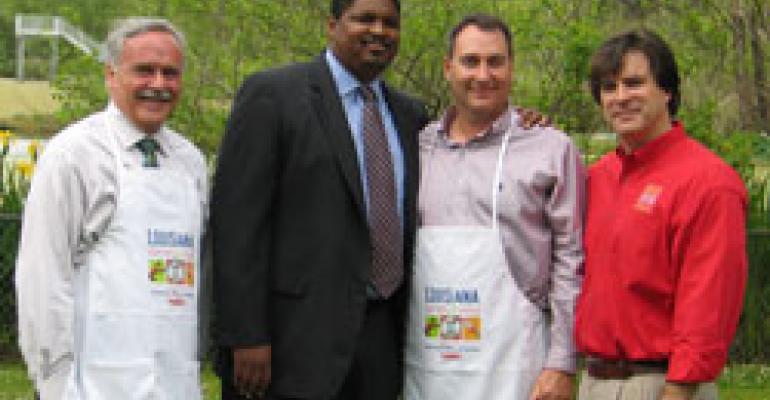AVERY ISLAND La. Louisiana has unveiled a $650,000 marketing push for the state’s restaurants and food producers, which are still trying to rebuild their business after hurricanes Katrina and Rita in 2005.
Chuck Morse, assistant secretary in the Louisiana Office of Tourism, officially introduced the Louisiana Culinary Trails Guide and website, www.louisianatravel.com/culinary, on April 3. The state is providing $300,000 for the first three years of the program, and private partners are providing $350,000.
"Louisiana has cuisine and authentic products that other states don't have," Morse said at a press conference Friday on Avery Island, which is the home to Tabasco hot sauce. "This is a very good program for the whole state."
He was joined by private-partner representatives that included Cecil Hymel Jr., vice president of administration of Tabasco producer, the McIlhenny Co.; Ewell Smith, executive director of the Louisiana Seafood Promotion and Marketing Board; and Gerald Breaux, the executive director of the Lafayette Convention and Visitors Commission and representative of the Louisiana Travel Promotion Association.
The new guidebook showcases seven trails that lead to "epicurean treasure" in the north, central and southern sections of the state. The new guidebook will be available in 66 state visitor centers in May, as well as by phone and through the website, which has free listings for more than 2,000 restaurants and allows visitors to create their own tours.
The listings currently are free to restaurants, which can upgrade the listings for a fee. Breaux said third-party travel writers helped create the content of the new published and online guides. The seven trails include: Red River Riches in the northwest corner of the state; Delta Delights in the northeast; Prairie Home Cooking in the center; Capital Cuisine to the southeast near Baton Rouge; Seafood Sensation close to Lake Charles; Bayou Bounty in the Acadiana coastal area; and Creole Fusion in the New Orleans area.
Creators said each stop includes places that "locals" frequent, such as mom-and-pop cafes, upscale restaurants, hole-in-the-wall hideaways, farmers' markets, sandwich shops, seafood joints, roadside stands, local grocery stores, bakeries and food festivals.
"Louisiana has long been known for, as the Culinary Trail Guide says, 'dishing up some of the best food this side of paradise,'" Morse said. "It was only natural that we develop a guide for the growing popularity of culinary travel that would highlight our unique cultural dining experiences and allow visitors to learn more about the history and significance of food in Louisiana."
The website lets visitors design culinary trails specific to their interests and provides travelers with additional information on the restaurants, attractions and backgrounds of the various cultural regions in the state.
Breaux said a study by Mount Auburn and Associates for LouisianaÕs Cultural Economy suggested a "food and culinary trail" as a way to help expand cultural markets within the state. He also said Gourmet magazine and the Travel Industry Association named Louisiana one of the top 15 destinations for food-related travel, which led to this new program.





